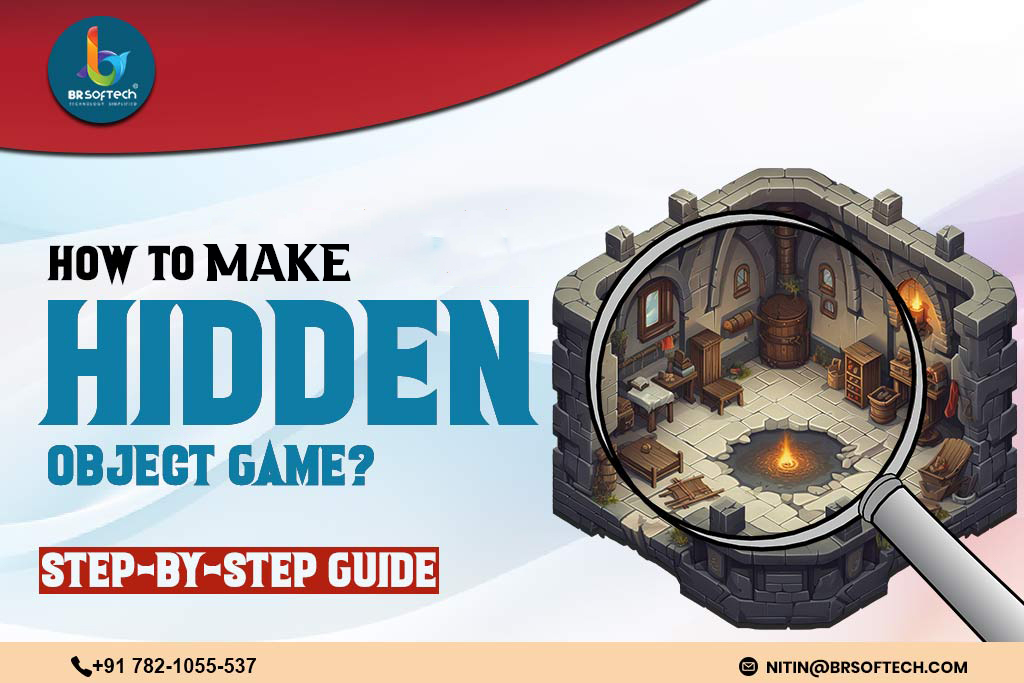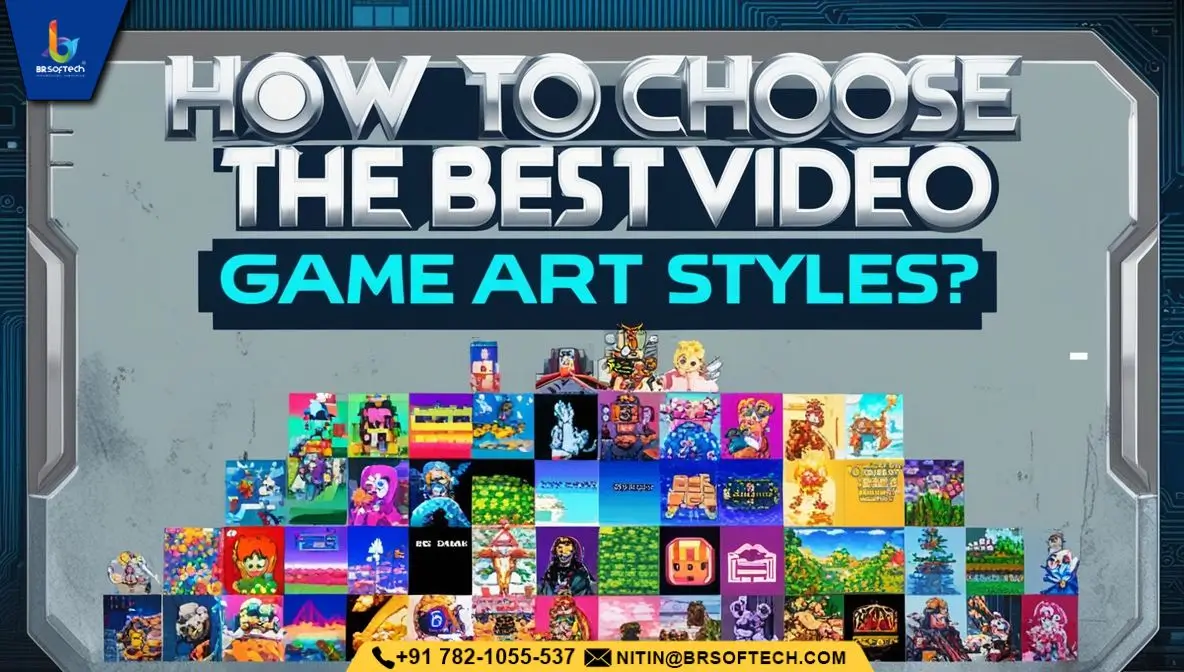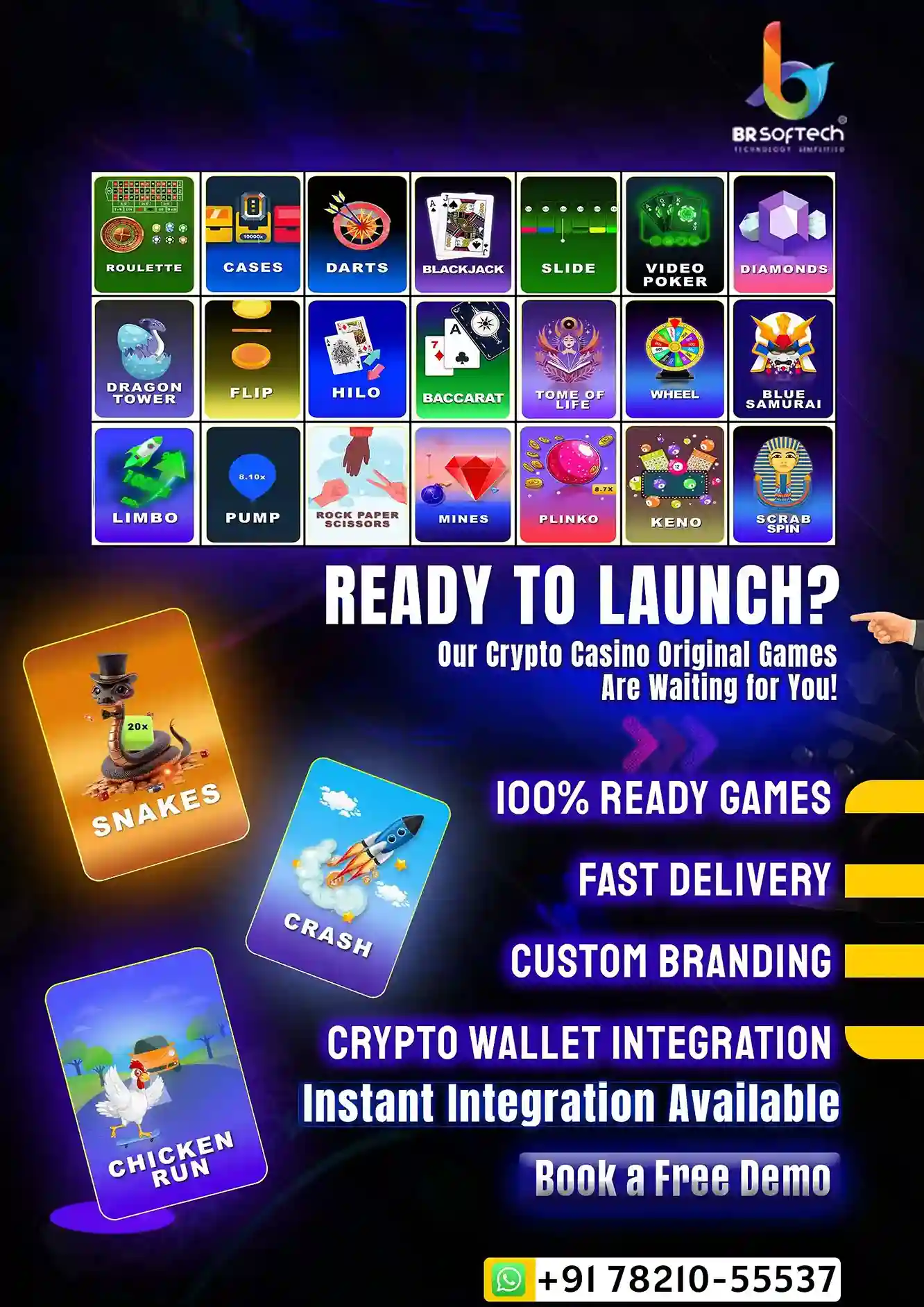Hidden object games are a great way to sharpen your observation skills while having fun. They are exactly what they sound like. In these games, players try to search for a specific object in a scene. They are a very popular form of entertainment among the masses, even in the digital era.
In this complete guide, you will learn how to build a hidden object game from scratch in simple steps. Whether you are a gaming entrepreneur or a part of a game studio, this blog will help you create a game that players love and enjoy.
What Is a Hidden Object Game?
A hidden object game is a puzzle game where players have to find specific items in a cluttered or unorganized scene. These games are so popular because they are relaxing, visually engaging, and easy to play.
Why Build a Hidden Object Game?
There are a number of reasons to build a hidden object game. They have:
- Low development cost
- High replay value
- Strong appeal to casual gamers
- Easy to monetize with ads or in-app purchases
How to Make a Hidden Object Game: Step-By-Step Process
From choosing a theme to launching the game on the marketplace, here is a detailed step-by-step process on how to build a hidden object game:
1. Pick a Theme and Storyline
First, choose a theme that grabs the attention of the players. You can choose themes like mystery, fantasy, or adventure. Add a simple story to keep players interested as they complete levels and progress further.
Tip: Themes like haunted houses, treasure hunts, or detective stories work well.
2. Choose the Right Game Engine
Next is to choose the tools to make the hidden object game. You don’t need to code everything from scratch. You can go with beginner-friendly game engines, a hidden object game maker, or a pre-built hidden object game template.
Game Engine:
- Unity: Best for mobile and 3D games
- Interacty: Great for web-based hidden object games
- GameMaker Studio 2: Good for 2D game
- Godot: Free and open-source
Hidden Object Game Maker:
The Hidden Object Game Maker is a specialized tool designed especially for hidden object games. It simplifies the process of coding and programming object placements and puzzle designs. The game engine comes with various pre-built templates that can be customized according to your preference.
Pre-built Hidden Object Game Template:
It’s a ready-made template that gives you the basic layout of your game, including the main features, 2D game art, and overall design. You can customize the template as per your story or game narrative. With this, you can develop a hidden object game in much less time than starting from scratch.
3. Design the Game Scene
Create a detailed background where items are hidden. Use high-quality visuals for more clarity and add small animations to make the scene come alive.
Graphic Style: The graphics must match your game’s tone and theme. A 3D realistic graphics design is a best fit for a mature audience. However, if you are targeting young adults and kids, you can choose a cartoonish design or an anime-themed design.
Seamless Animations: Quick and fluid animations immerse players. Include simple animations for rain and wind. Moreover, you can use animations to provide hints to players for finding hidden objects.
Adaptive Game Design: Design must be compatible with all types of platforms and devices, and different screen sizes.
Key tips:
- Keep the scene colorful but not too cluttered
- Use a consistent art style
- Place items in tricky but fair locations
4. Add Items and Game Logic
After designing the game scene, decide which objects you will make hidden and that players need to find. Use layers to hide them behind other items. You can add a timer or a hint system that can create an extra challenge for players.
Game logic includes:
- Object selection
- Click or tap detection
- Progress tracking
- Hint cooldowns
5. Optimize for All Devices
Make sure your game runs smoothly on desktop PCs, tablets, and smartphones. Use a responsive UI and test on different screen sizes.
6. Test and Improve
Before launch, test the game with real users. This will help in knowing how well the game will perform once it is released. Collect their feedback and fix bugs. Adjust difficulty based on the player’s response. This leads to smoother performance and a better experience for users.
Tips:
- Test the game with a different set of users multiple times.
- Test the game on different platforms.
7. Launch and Promote Your Game
Once everything is ready, it’s time to publish your game on various platforms like:
- Google Play Store
- Apple App Store
- Web (using tools like Interacty)
Promotion tips:
- Use social media to create hype for your game
- Offer rewards for early users
- Focus on App Store Optimization (ASO)
Also Read:- How to Make a Match-3 Game
Tips to Make Your Game Stand Out
If you want your hidden object game to be more engaging and memorable, consider these simple but powerful tips:
Add Sound Effects and Background Music
Use soft background music and realistic sound effects (like a “click” when an object is found) to make the game more immersive.
Create Multiple Levels and Environments
Don’t stick to one background. Design different scenes, such as a forest, library, haunted house, or beach, to keep players curious.
Use Short Cutscenes to Tell a Story
Add quick animated or image-based story parts between levels. This helps players feel connected to the game and its characters.
Keep the Game Lightweight
Optimize images and animations so your game loads fast and doesn’t lag, especially on mobile devices.
Add Social or Competitive Features
Let players share scores or compete with friends. A simple leaderboard or challenge mode increases user retention and word-of-mouth sharing.
App Store Optimization (ASO):
Make sure to properly optimize it for ASO if you are publishing your game on the App Store and Google Play Store. This includes following the rules of the app marketplace.
Final Words
Creating a hidden object game is simple with the right tools and planning. Focus on visuals, story, and user experience to keep players engaged. Start small, test often, and refine your game for the best results across devices.
If you hire the best video t game developer, you can create a hidden object game for any platform at an affordable price.
Frequently Asked Questions (FAQs)
Q1. What tools do I need to create a hidden object game as a beginner? Ans. You can use these beginner-friendly tools:
Unity: Offers templates and asset support
GameMaker Studio 2: Drag-and-drop interface
Interacty: No-code tool for web-based games
Hidden Object Game Maker: Includes pre-made assets and layouts
Q2. How do I make a hidden object game that stands out? Ans. To stand out:
Pick a unique and engaging theme
Add a simple storyline or character journey
Use detailed, colorful scenes
Add hint systems and adaptive difficulty
Make it mobile-friendly with a clean UI
Q3. Are there free tools or templates to build hidden object games? Ans. Yes, here are some options:
Q1. What tools do I need to create a hidden object game as a beginner? Ans. You can use these beginner-friendly tools:
Unity: Offers templates and asset support
GameMaker Studio 2: Drag-and-drop interface
Interacty: No-code tool for web-based games
Hidden Object Game Maker: Includes pre-made assets and layouts
Q2. How do I make a hidden object game that stands out? Ans. To stand out:
Pick a unique and engaging theme
Add a simple storyline or character journey
Use detailed, colorful scenes
Add hint systems and adaptive difficulty
Make it mobile-friendly with a clean UI
Q3. Are there free tools or templates to build hidden object games? Ans. Yes, here are some options:
Unity Asset Store: Free templates and objects
Itch.io: Community-shared assets and scenes
Godot: Open-source engine with 2D support
Q4. Can I publish my hidden object game on Android or iOS? Ans. Yes, you can publish your hidden object game on Android or iOS. You need to follow the marketplace guidelines and rules. Also, make sure to apply App Store Optimization (ASO) for better reach.
Q5. What makes a hidden object game successful? Ans. Key elements include:
A relatable main character or story
Visually rich backgrounds
Well-placed, story-linked objects
Increasing level of difficulty
Smooth play on all devices










